A creeping vine with gorgeous blue and purple blooms that fill the air with the scent of jasmine, wisteria is hated by some, loved by others. Which category you fall into might depend on where you live and if the variety in your area is invasive, as some are. Today we'll take a deep dive into a special edible flower. If you like black locust flowers, you'll love them.
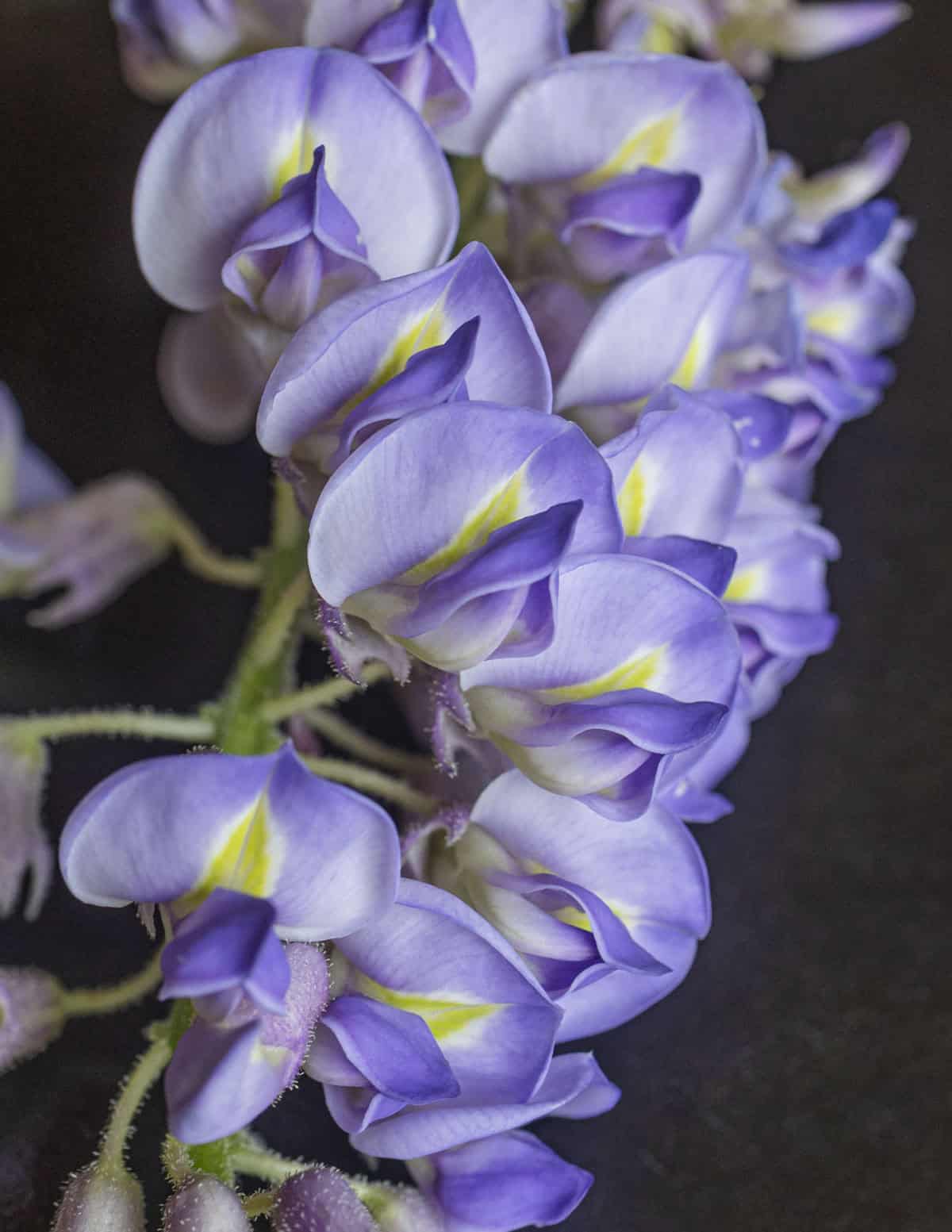
Wisteria is a leguminous vine with edible flowers. They taste reminiscent of black locust flowers, but are more floral and lack the vanilla aroma that Robinia / locust species have. Indigenous varieties can make a nice ornamental, I have one planted in my backyard where it thrives in the full sun.
Is Wisteria Invasive?
There's indigenous North American wisteria varieties and cultivars, as well as invasive species. American wisteria (Wisteria. frutescens) is much easier to control than Chinese wisteria (Wisteria sinensis) and Japanese wisteria (Wisteria. floribunda) which are aggressive growers.
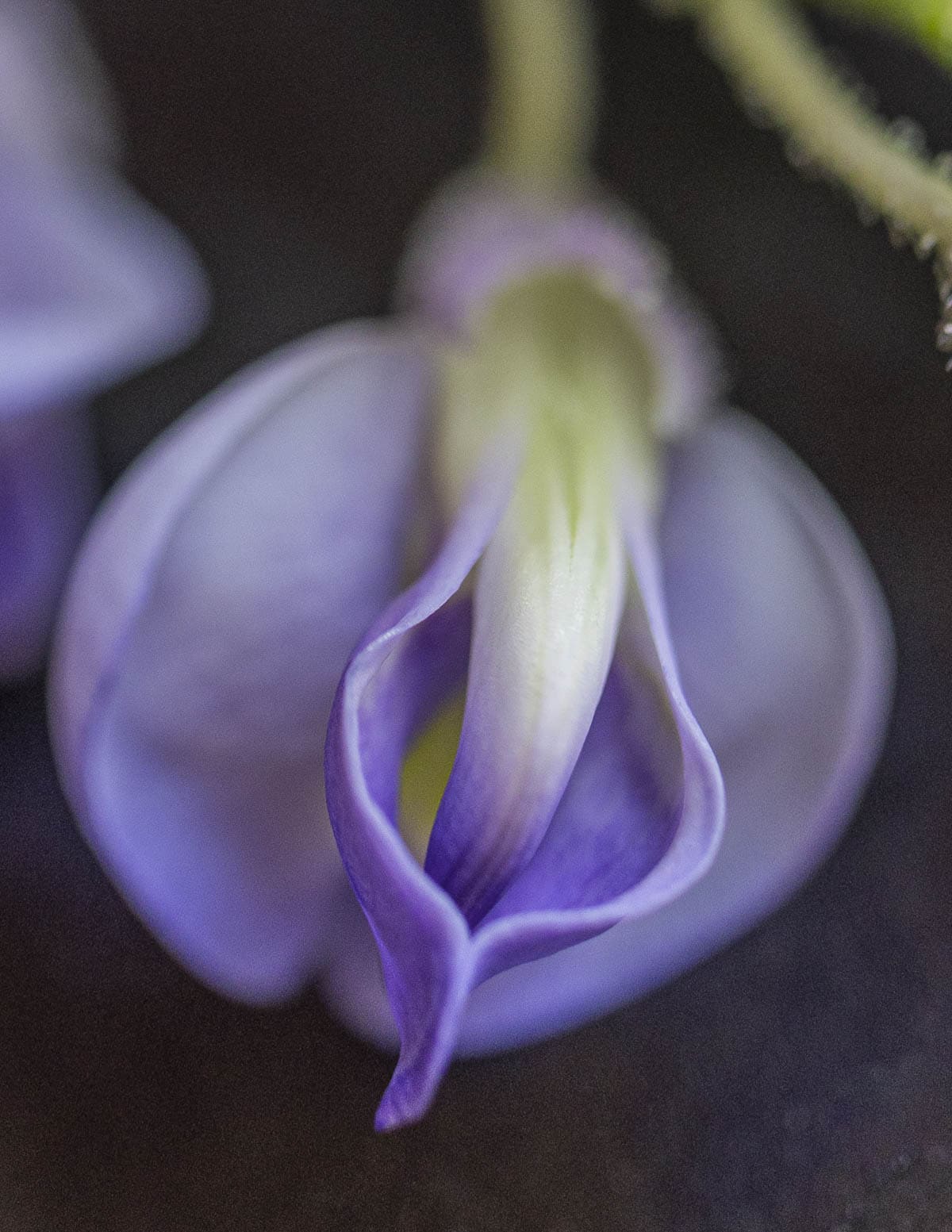
One characteristic that can help separate species is that when flowering, American wisteria will flower after the leaves are fully formed in the Summer, while Asian varieties bloom while the leaves are small in the early Spring.
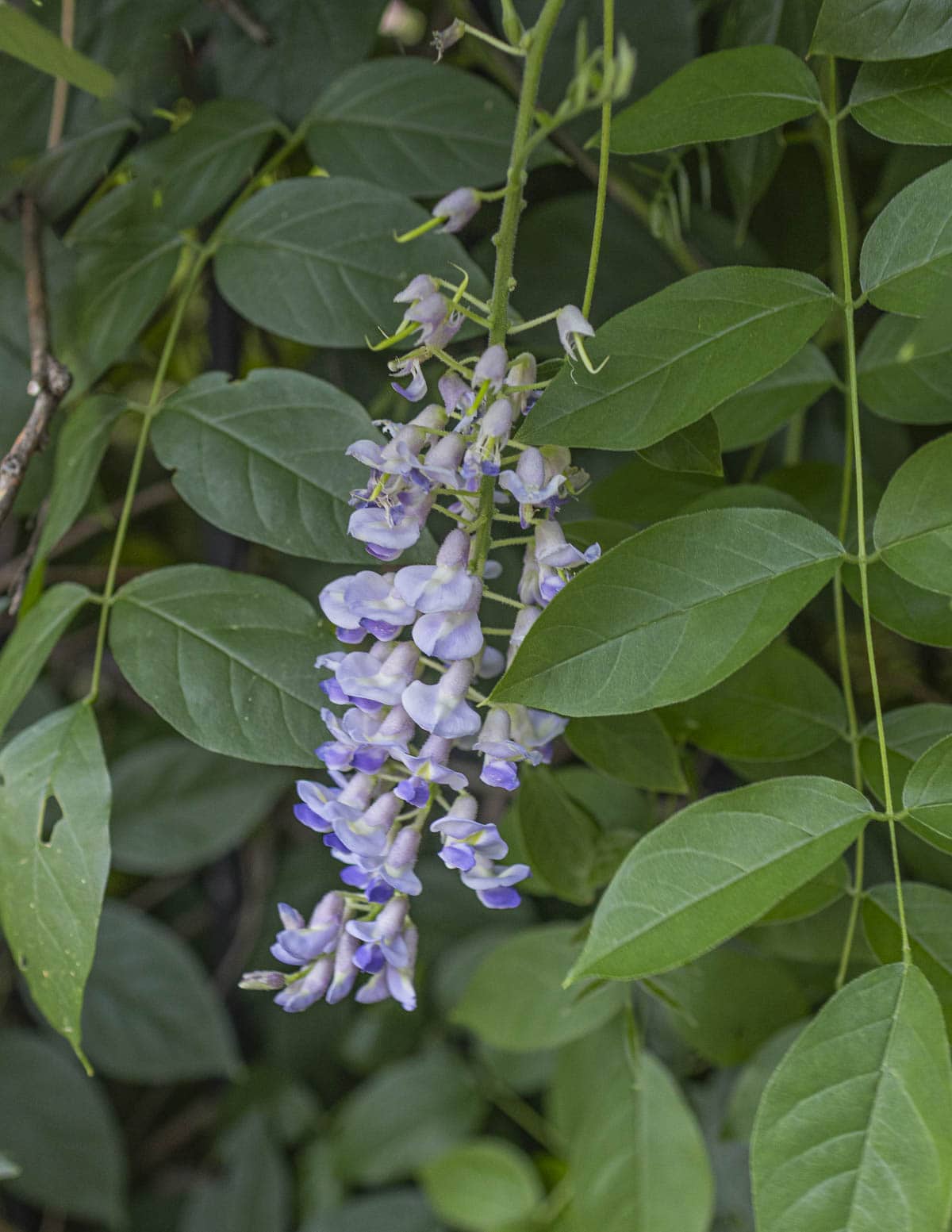
While I was in Georgia last week with my host Cornelia Cho and her husband Sam, I was shocked to see how widespread, weedy, and unkempt the invasive Chinese variety was.
American wisteria also has more compact blooms that resemble a purple pine cone compared to the drooping, long blooms of the Asian varieties I've seen.
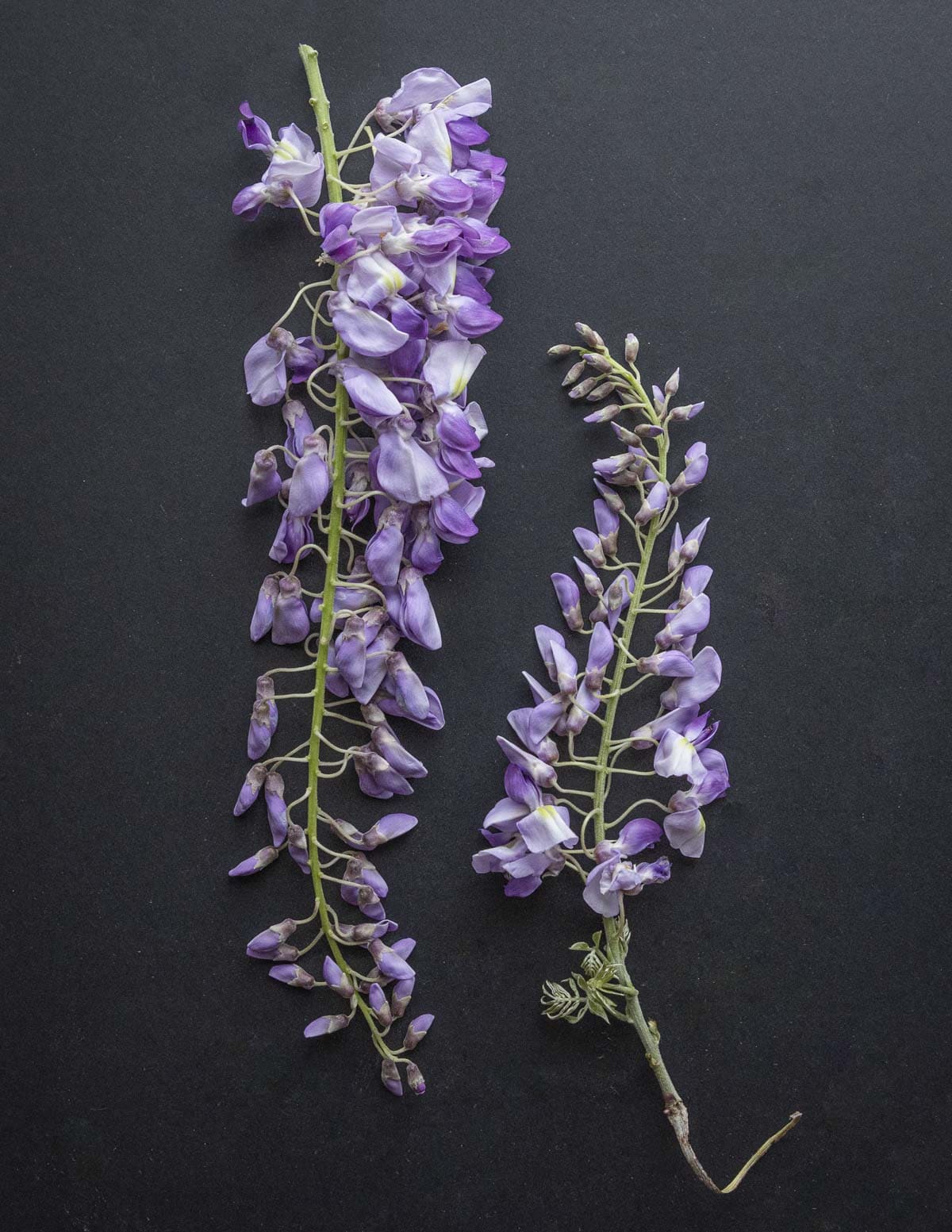
Wisteria is Edible, But Only the Flowers
Unlike black locust flowers, the only edible part of wisteria is the flowers-every other part of the plant is toxic and should not be eaten as they contain the compound wisterin.
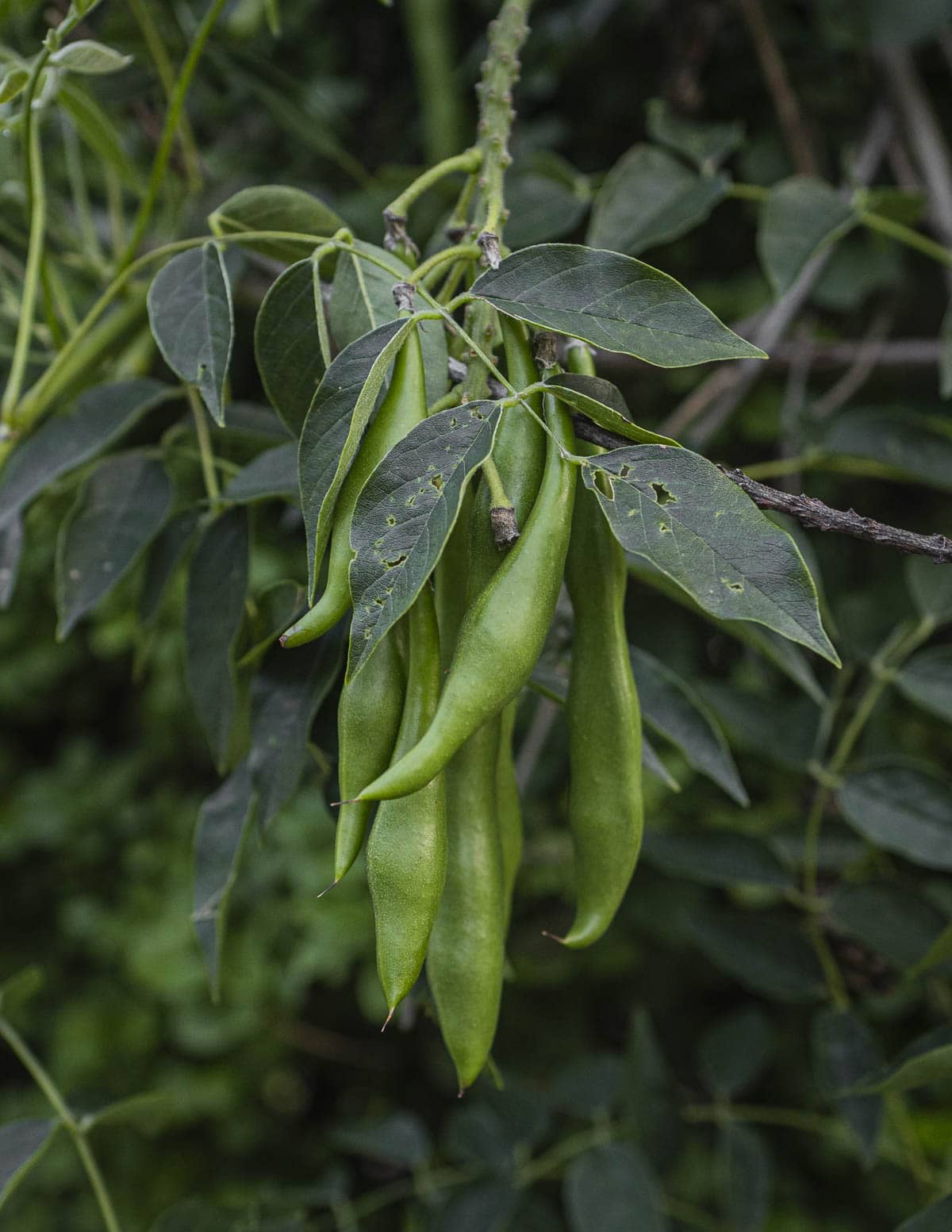
While some websites like the National Poison Control Center claim that the entire plant is poisonous, I've eaten more than a pound of raw flowers just this week without any negative effects.
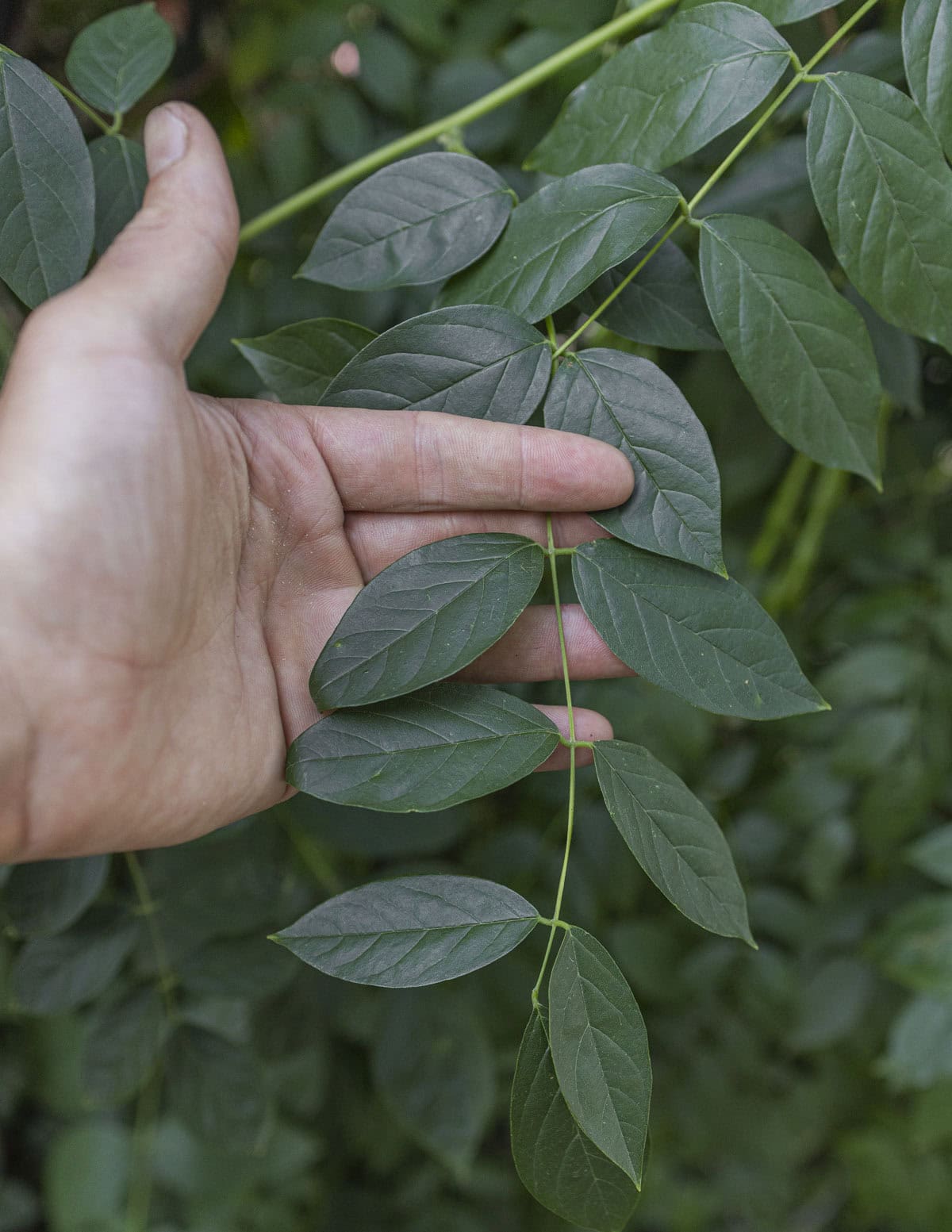
From what I've read, wisteria poisoning seems to be most common with people eating the admittedly attractive seeds. Symptoms of wisterin poisoning can include:
- Vomiting and diarrhea
- Fainting
- Sweating
- Nausea
- Confusion
Flatulence
As wisteria is a legume, another thing to mention I've only seen a few people talk about is digestive upset and/or flatulence. Personally, I served the flowers raw this week to three close friends of mine in amounts of at least one oz. None of them reported any digestive issues, but everyone's different.
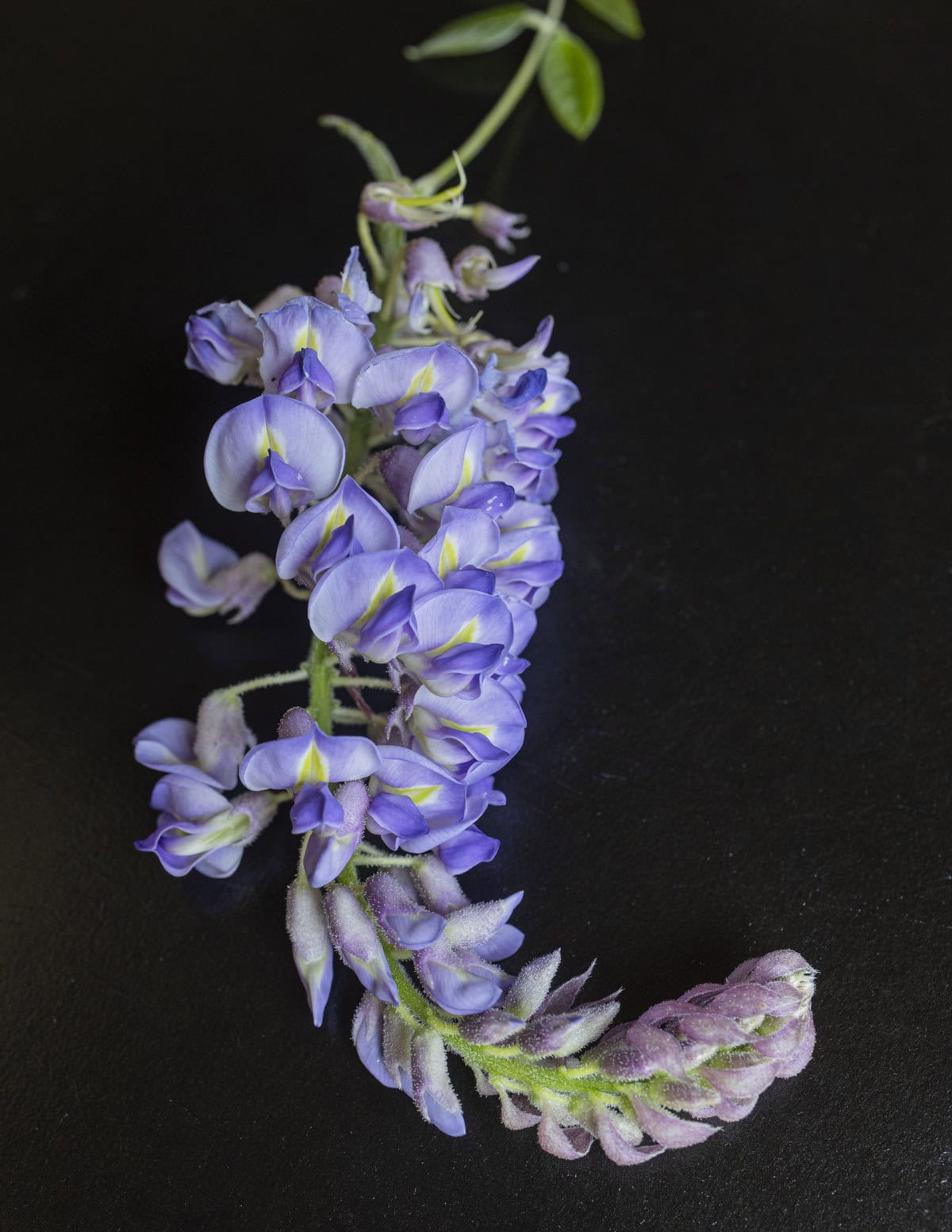
It seems logical to me that some people could experience bloating and cramps after eating if they're sensitive to them. Dosage is also important to consider, and it's always good to consume small amounts of foods that are new to you.
Harvesting
Just like locust flowers, wisteria flowers have a relatively short shelf life and will keep the best if the entire clusters are clipped as opposed to stripping them off the stem. If you're harvesting larger amounts to cook with it's ok to simply strip them off.
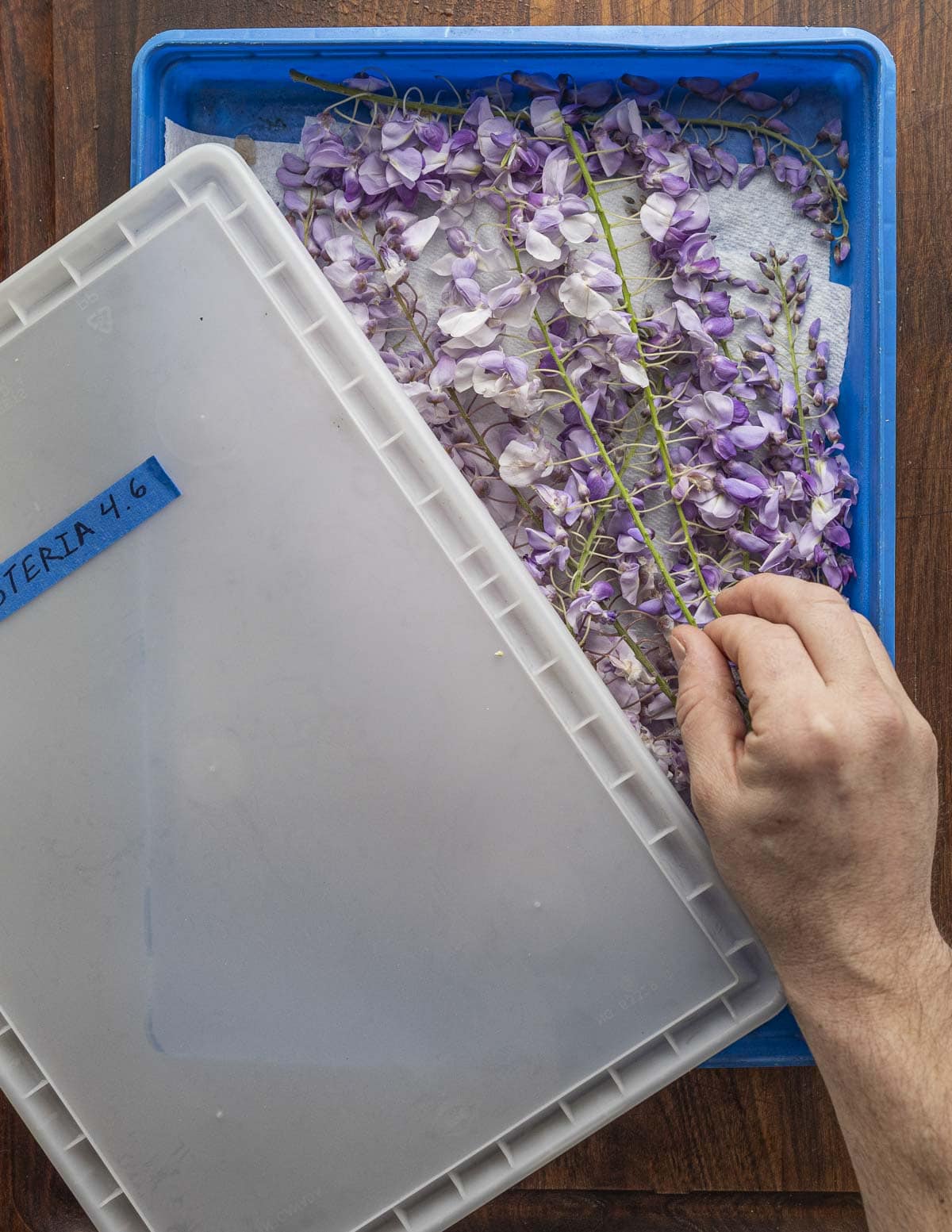
For the longest shelf life, the flowers should be chilled in the refrigerator in a container that will hold in moisture. The best way to store any edible flower is in a hard-sided container lined with moist paper towels.
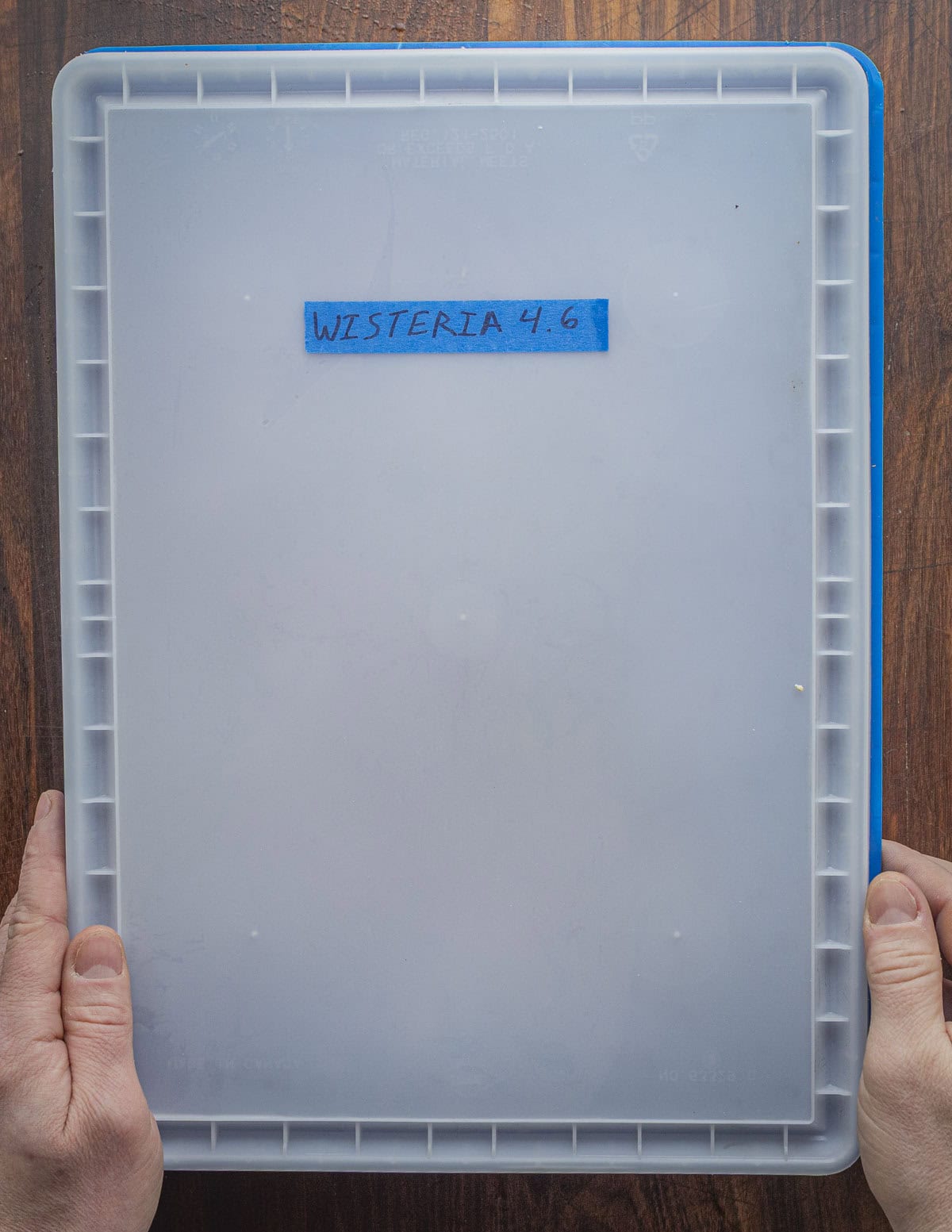
I'll store large amounts in a zip top bag, or massive amounts in a bus tub, covered with moist paper towels and a lid. Left in a paper bag the flowers will quickly dry out. As they're are attractive to more than humans, it's also a good practice to inspect the flowers for insects before cooking.
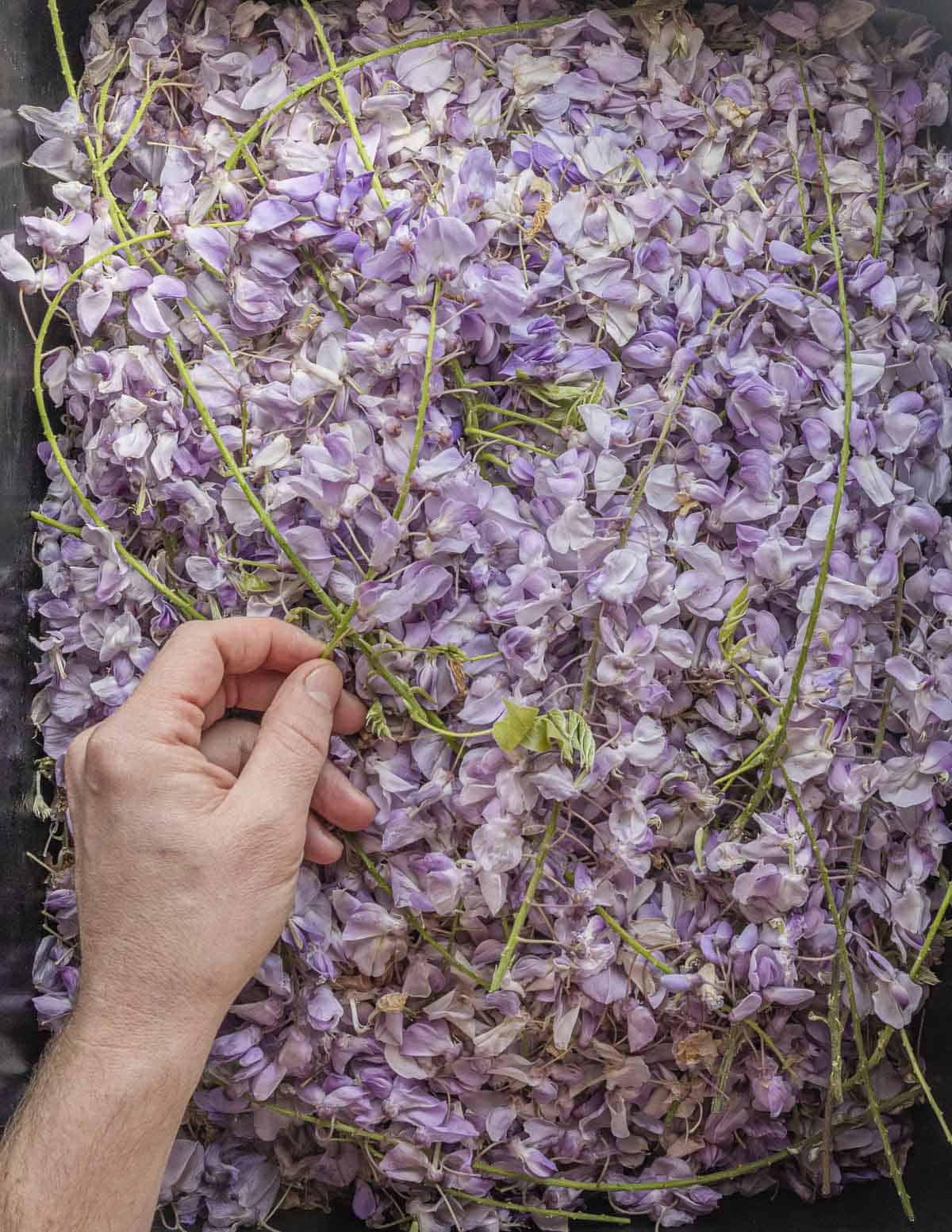
Just like locust flowers there's a window of harvesting for the best result. Fully opened flowers are more delicate and will deteriorate faster than clusters of flowers with some unopened at the top. Refer to the image below.

I've seen people claim that the tiny flower stems must be removed as shown below for safety, but I didn't find that to be the case at all. I just strip the flowers from the stem.
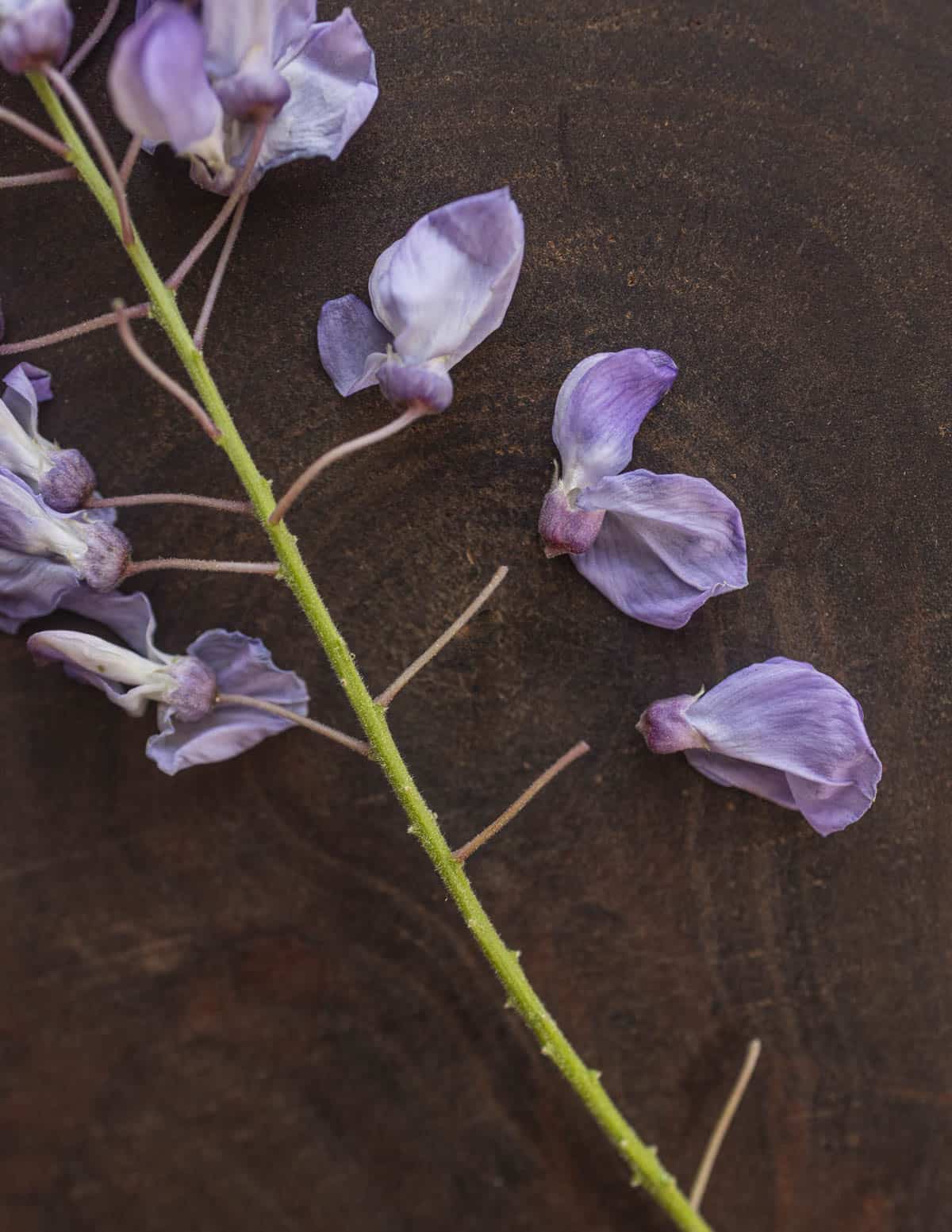

A Few Wisteria Recipes
The flowers, and only the flowers can be used as a sweet or savory garnish, or infused into fatty liquids like cream, coconut milk or sugar syrup. They can also be simply eaten out of hand as a snack like locust flowers. They're particularly good with peas and beans.

I tried making Sam Thayer's black locust salad. It sounded good in theory, but it's not quite the same. Most importantly, the texture is inferior and off-putting. Unless the individual stems of each flower is removed it turns into a mess of stems.
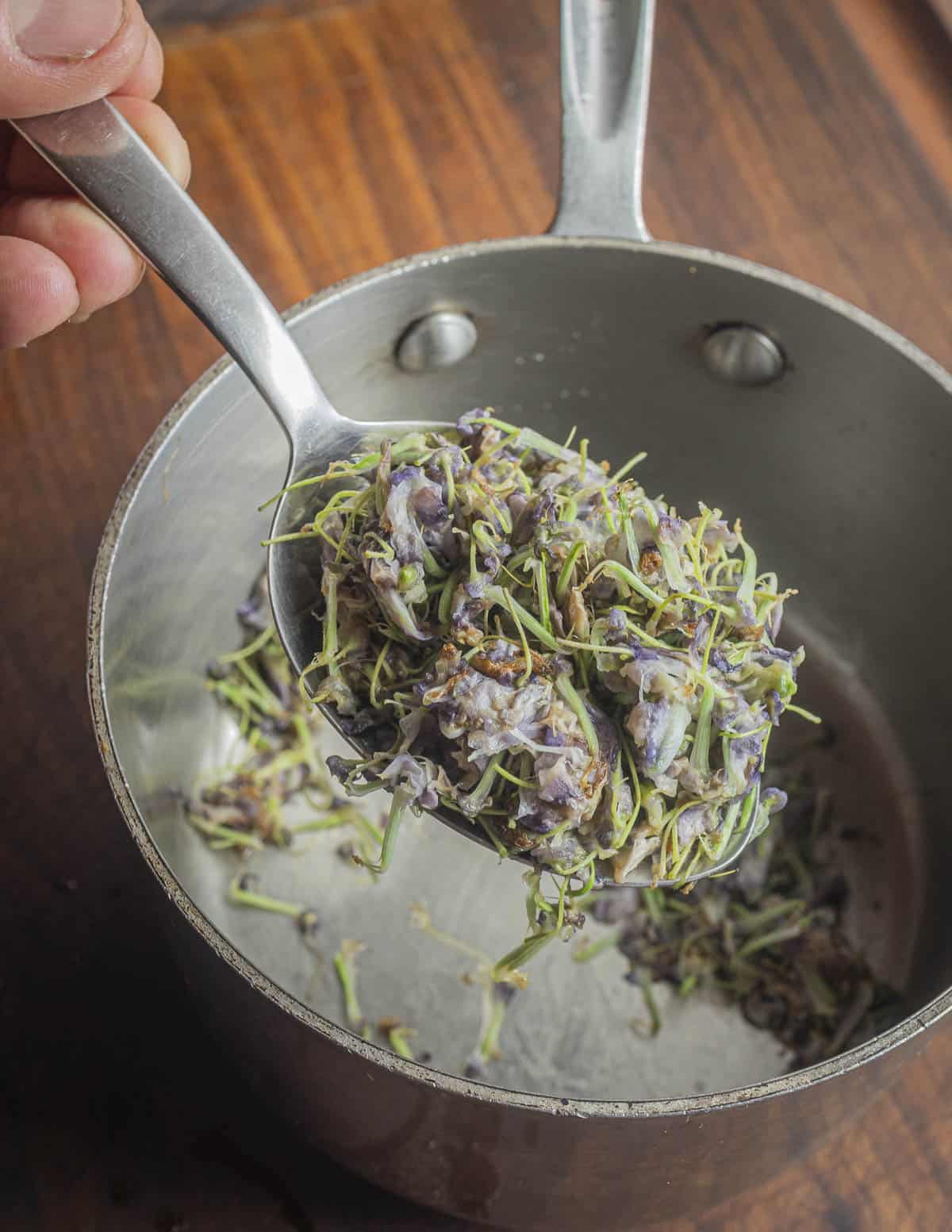
Wisteria-Infused Cream
Just like locust and meadowsweet, aroma of the flowers will bind to lipids / fats and infuses well into dairy or coconut milk.
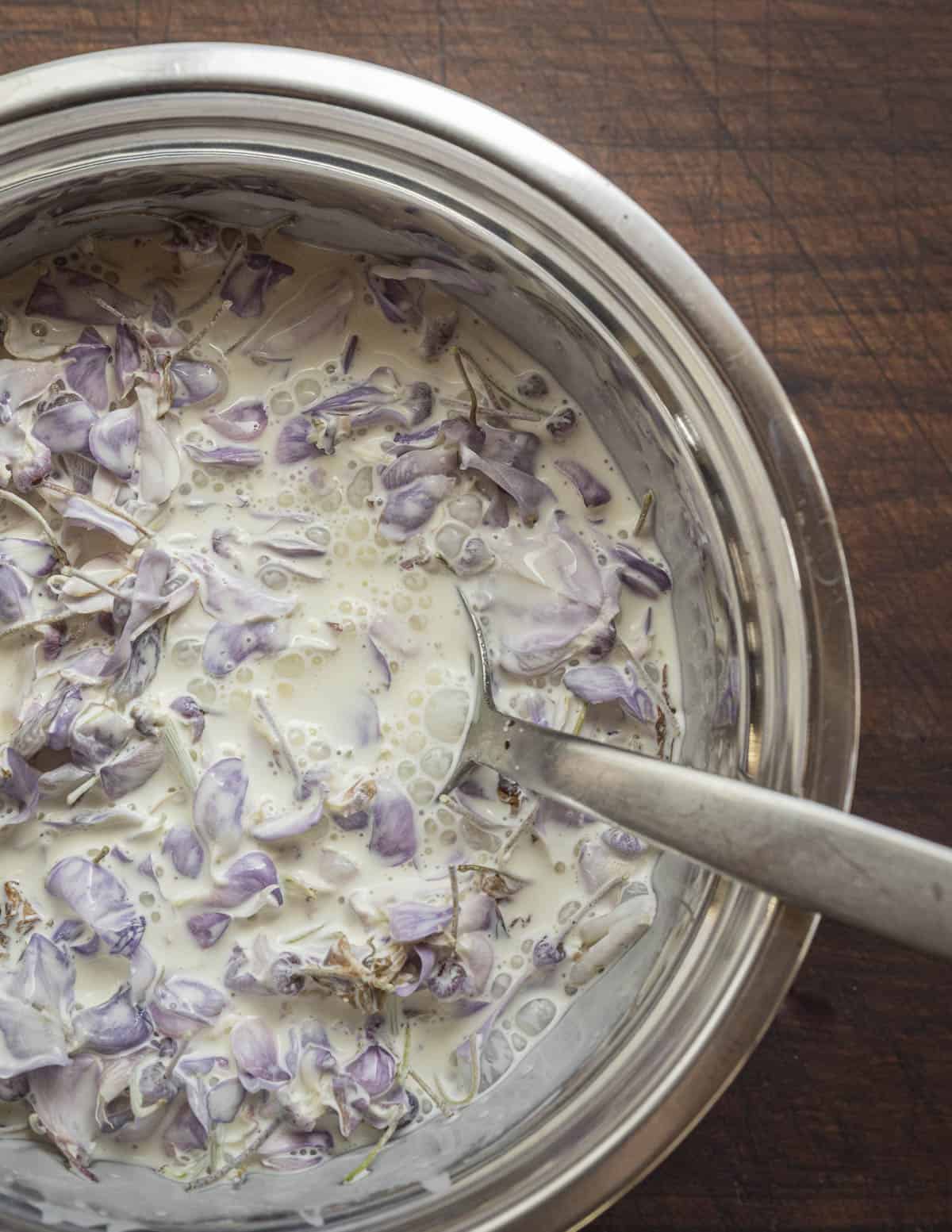
The only catch is that cooking will destroy the fresh flavor so it must be used cold. If the cream is whipped, especially if it's set with gelatin, it, and a few handful of flowers would be great in something like my locust flower-nannyberry torte below.
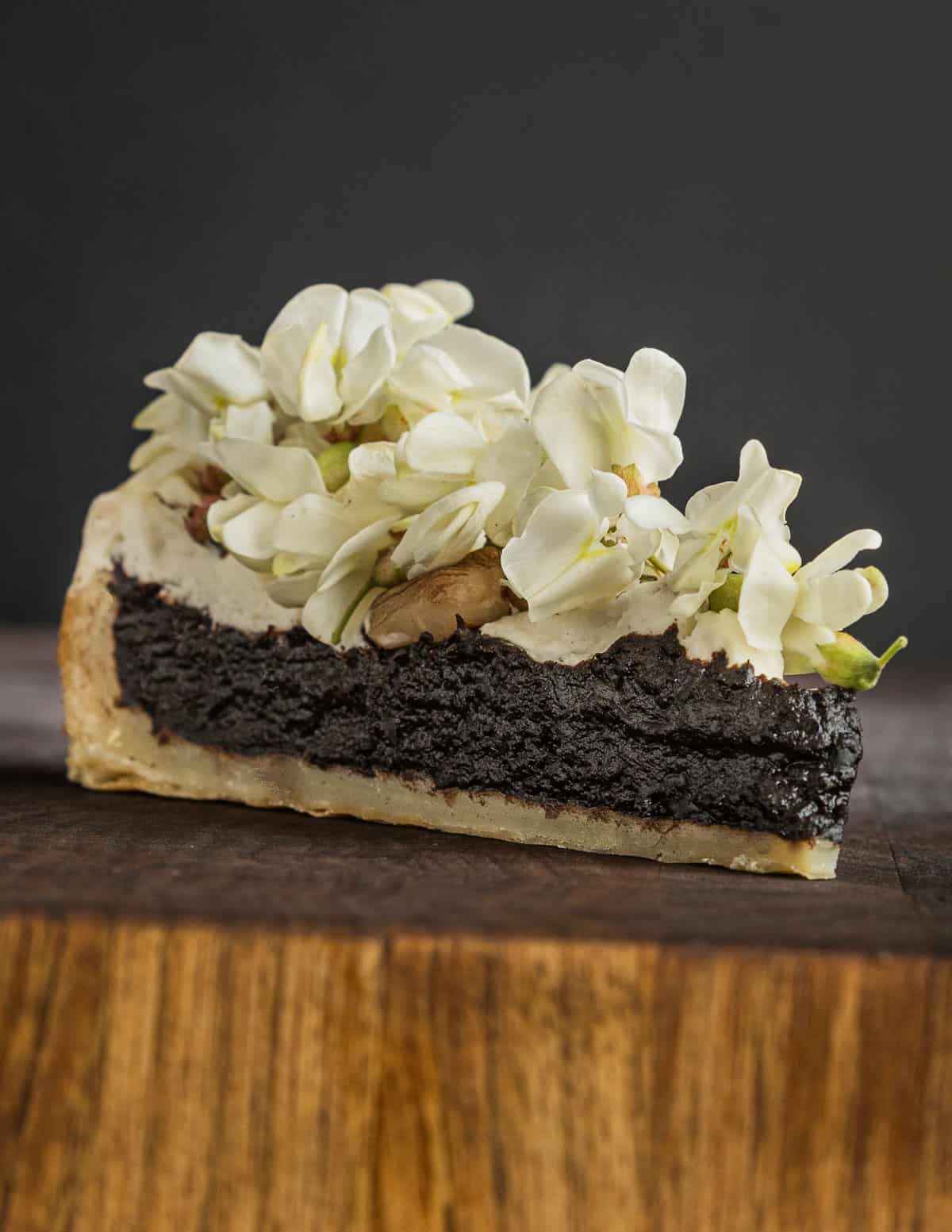
Wisteria Crepes
Having so many flowers was a great excuse to revisit my black locust crepe recipe many people have asked for over the years. The flowers are pureed with coconut milk, a touch of sugar, vanilla and cubes of bread to make an sweet, floral filling for desserts that reminds me of pastry cream. It is the best recipe mentioned in this post.
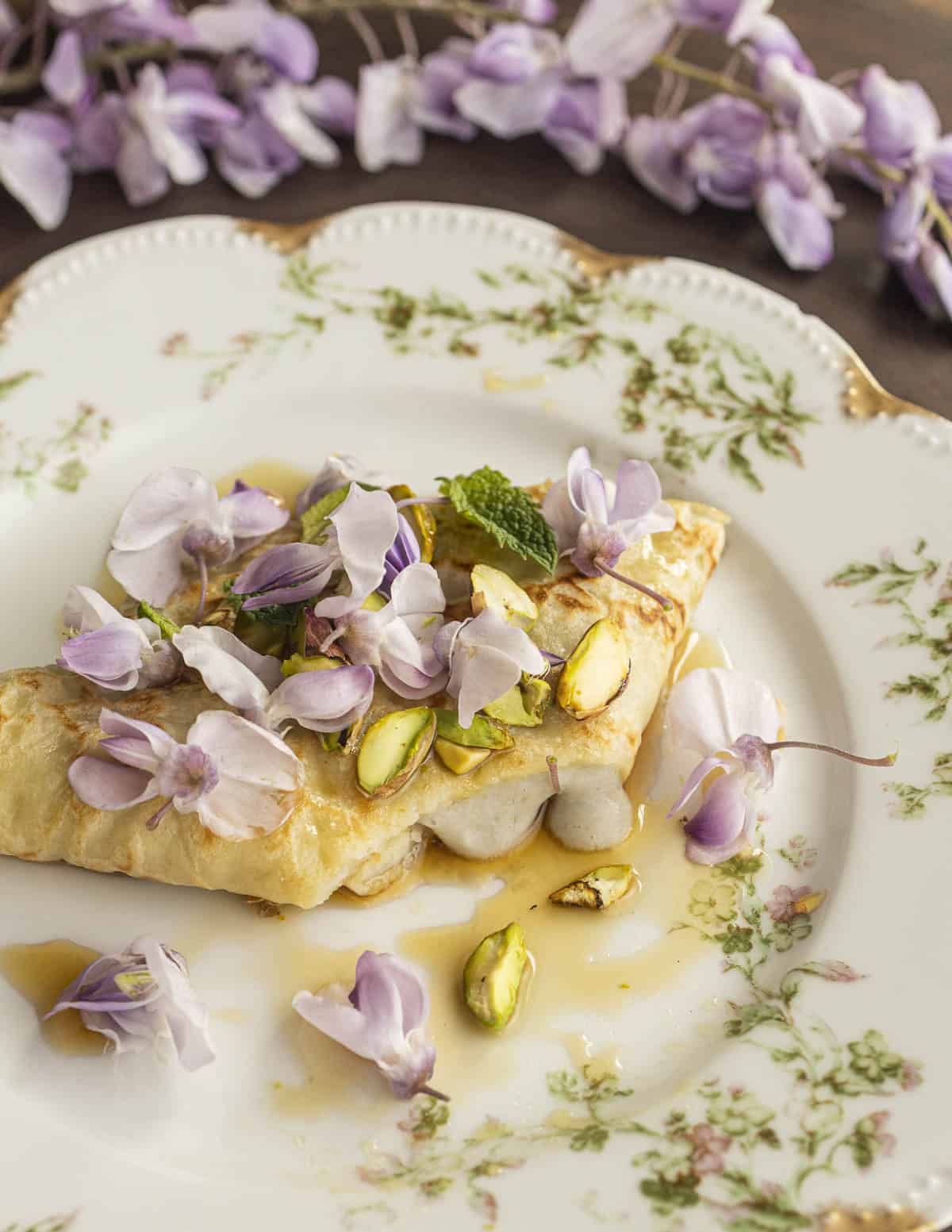
The paste itself turns an attractive grey color (sarcasm), but it's easy to adjust with a pinch of aronia juice syrup or another dark berry.
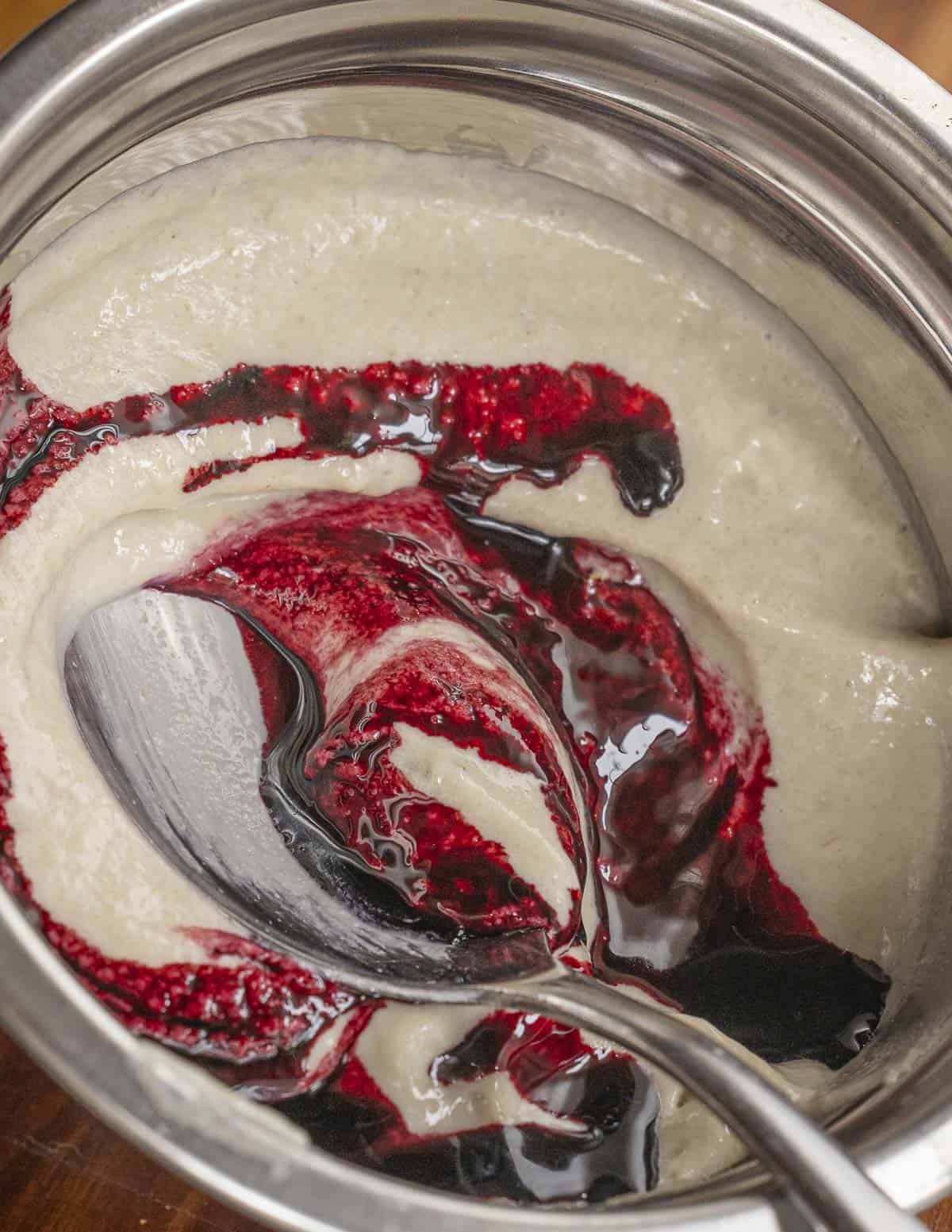
To make it, puree 1 cup warm half and half or coconut milk with 2 oz crustless bread cubes, ¼ cup sugar, 2 oz fresh flowers and 1 tablespoon unsalted butter. Chill it quickly after it's pureed.
Wisteria Syrup
One of the most well known wisteria recipes is syrup. it's mostly good for sweetening cold cocktails.
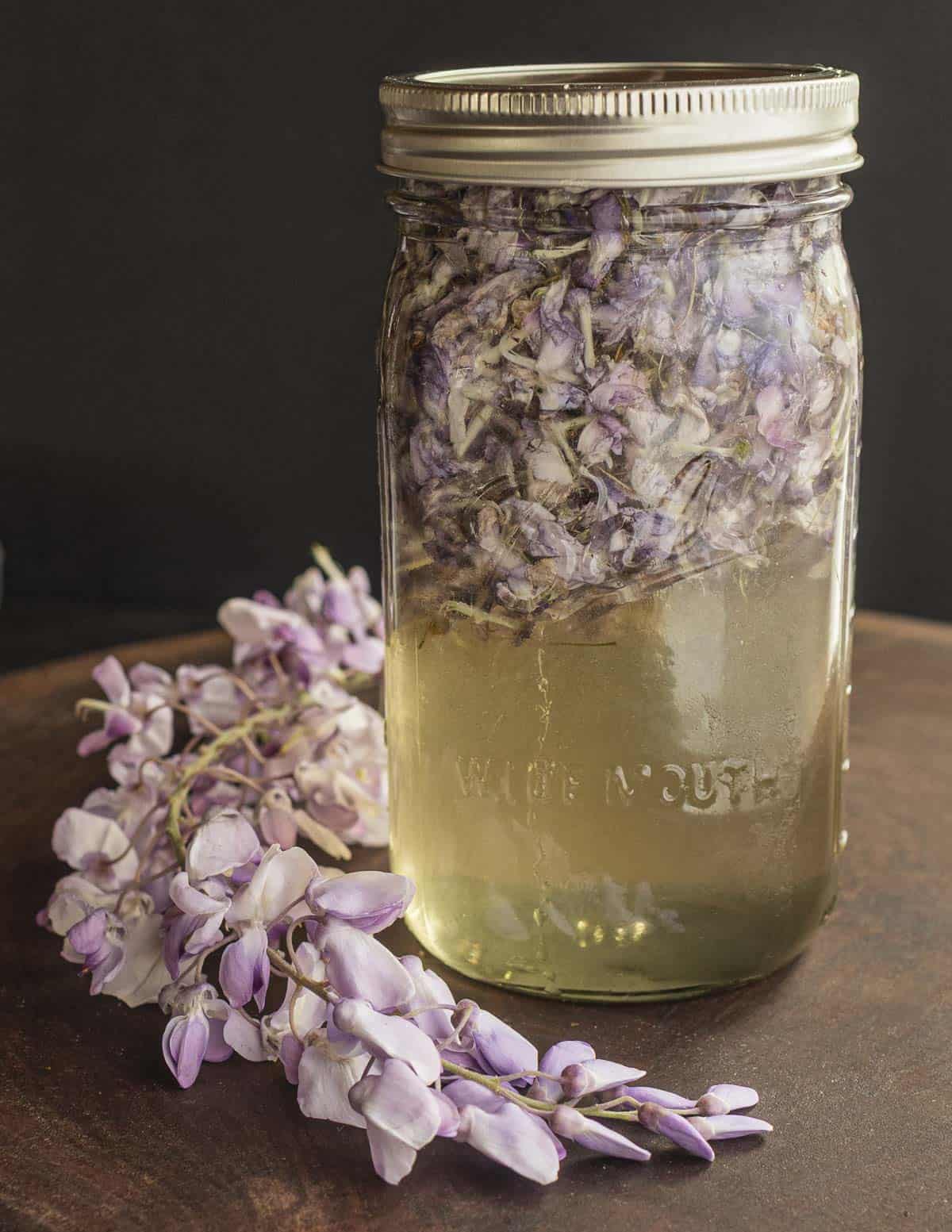
To make it, simmer 4 cups of sugar with 2 cups of water, cool, add 4 oz of flowers and infuse overnight, strain and bottle in a clean quart mason jar and refrigerate.
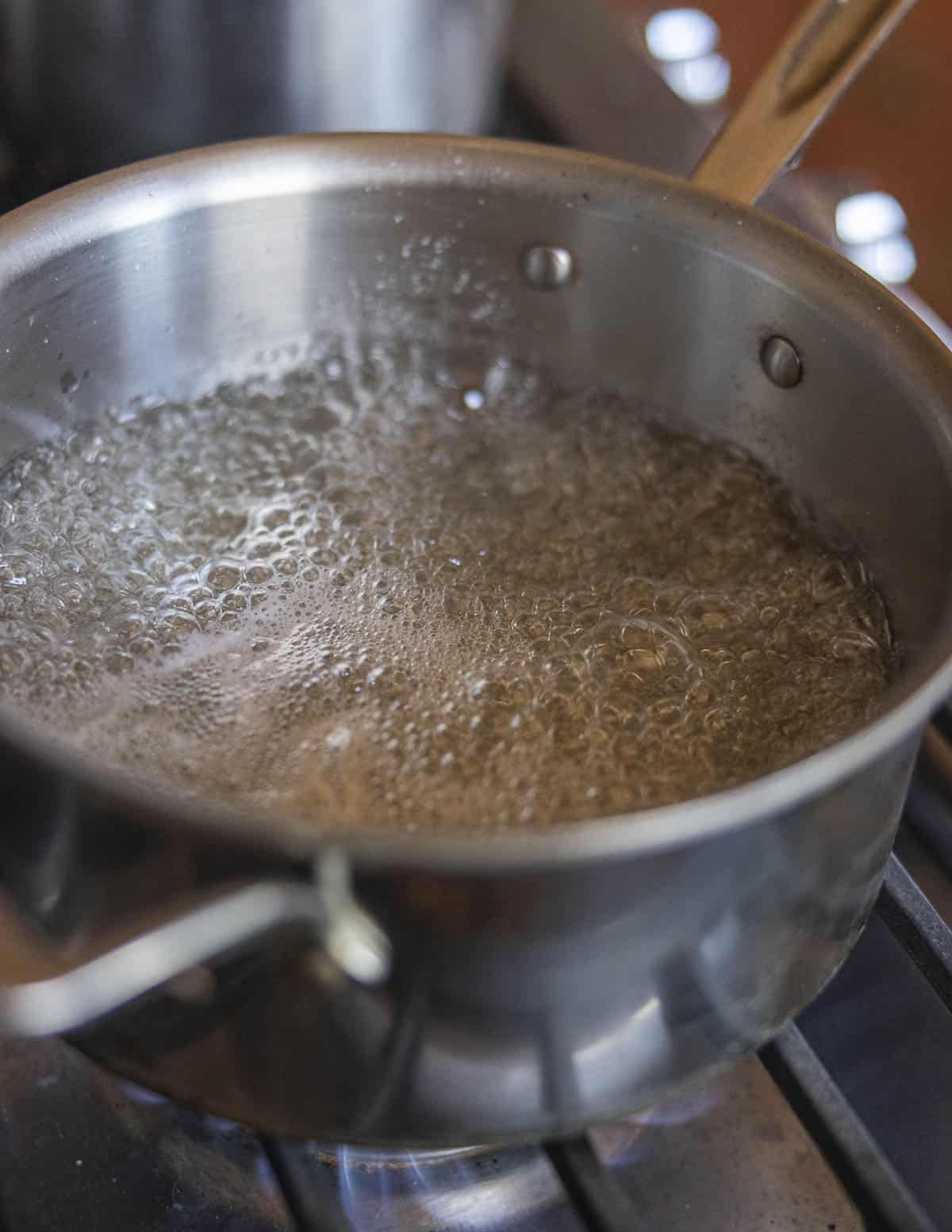
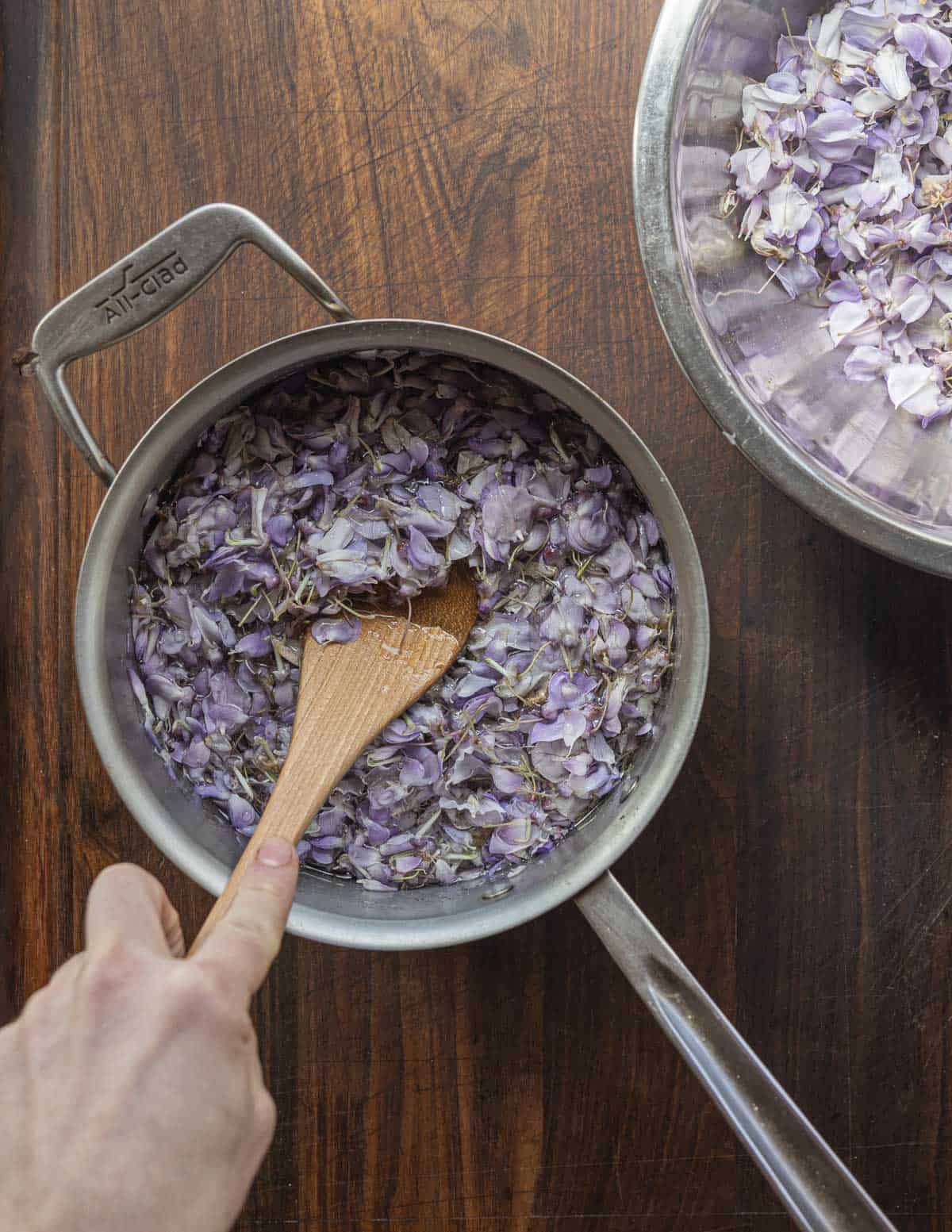
The syrup tastes fine, but with so many more versatile syrups like feremnted black walnut syrup and pine cone cyrup/ mugolio in my repertoire, I probably won't be making much of it.
Ice Cream
Inspired by an ice cream I ate once made with licorice candy by Chef Eric Harcey, I made a few batches of ice cream from the flower panade. It's good, but, in contrast to the crepes, I prefer the mixture pureed with the flowers cold to keep the fresh, floral flavor.
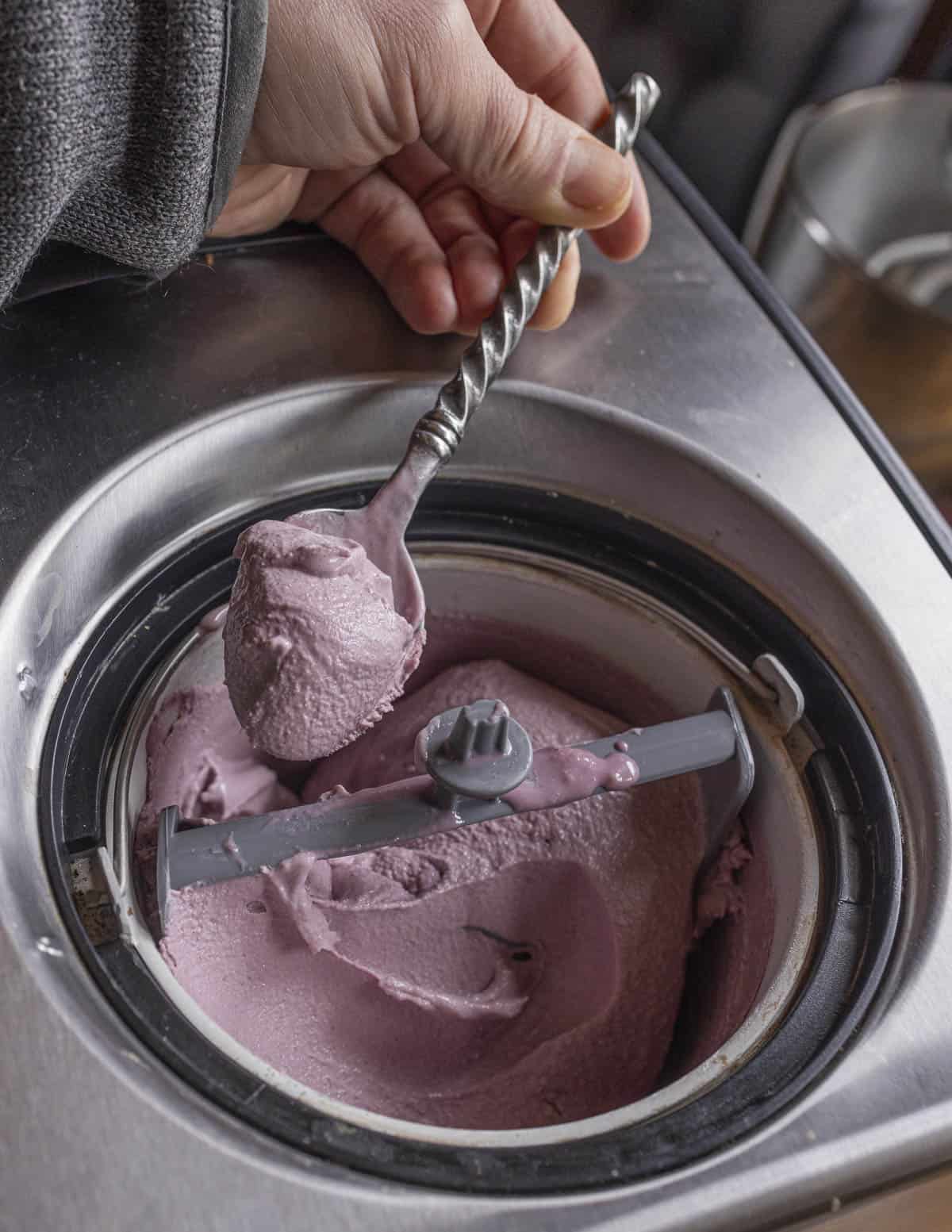
As a starting point, I used 1 recipe of the flower panade mixed with 2 cups of ice cream base made with 5 egg yolks.
Related Posts
- Hopniss Tubers / American Groundnut / Apios americana
- Green Kentucky Coffee Beans
- Meadowsweet Flowers

Ellen
It also infuses well in alcohol. I like the flavor best with gin.
Alan Bergo
Thanks Ellen.
z
Just to clarify, the panade you used for the ice cream is the crepe filling, yes?
Alan Bergo
Correct. Sorry if that wasn't clear.
Betty Black
Is it only the one variety which is edible? Thank you.
Alan Bergo
All the varieties are edible just only the flowers.
Elizabeth Black
Thank you . I have sinensis just about to open here in Scotland so will try them
Alan Bergo
Yes those are the ones I've eaten in the largest volume.